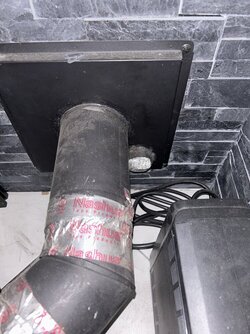Help!
Installed my Drolet 1800 escape wood burning insert 2 years ago, haven’t used it much due to draft issues with startup - have that fixed!
However, I can easily start the stove with a top down fire, burns hot and problem free for as long as I keep the damper open and stocked up. I get secondary burn and no black smoke coming from the chimney.
My problem is as the fire burns down, when it gets down to just a few ashed over coals, with the damper closed I end up with carbon monoxide coming into the room.
My setup:
Drolet 1800 insert with distribution fan
6 inch insulated stainless liner - approximately 21 feet from top of insert to top of liner
Liner cap in place with 6 inches of clearance for exhaust
Fireplace is brick with a terra cotta liner in good shape that the liner runs through
No fresh air intake (house built in 1997)
Fireplace is in a den, approximately 200 sq feet, monoxide detector on opposite wall reads 0 when burning, 158 when burning out
Any help would be appreciated
Installed my Drolet 1800 escape wood burning insert 2 years ago, haven’t used it much due to draft issues with startup - have that fixed!
However, I can easily start the stove with a top down fire, burns hot and problem free for as long as I keep the damper open and stocked up. I get secondary burn and no black smoke coming from the chimney.
My problem is as the fire burns down, when it gets down to just a few ashed over coals, with the damper closed I end up with carbon monoxide coming into the room.
My setup:
Drolet 1800 insert with distribution fan
6 inch insulated stainless liner - approximately 21 feet from top of insert to top of liner
Liner cap in place with 6 inches of clearance for exhaust
Fireplace is brick with a terra cotta liner in good shape that the liner runs through
No fresh air intake (house built in 1997)
Fireplace is in a den, approximately 200 sq feet, monoxide detector on opposite wall reads 0 when burning, 158 when burning out
Any help would be appreciated


